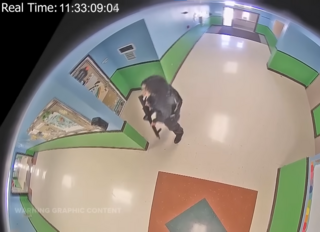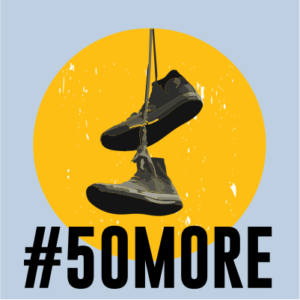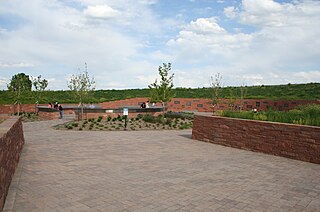
The Columbine High School massacre, often simply referred to as Columbine, was a school shooting and attempted bombing that occurred on April 20, 1999, at Columbine High School in Columbine, Colorado, United States. The perpetrators, twelfth-grade students Eric Harris and Dylan Klebold, murdered twelve students and one teacher. Ten of the twelve students killed were in the school library, where Harris and Klebold subsequently died by suicide. Twenty-one additional people were injured by gunshots, and gunfire was also exchanged with the police. Another three people were injured trying to escape. The Columbine massacre was the deadliest mass shooting at a K-12 school in U.S. history, until December 2012. Columbine is still considered one of the most infamous massacres in the U.S. for inspiring many other school shootings and bombings; the word "Columbine" has since become a byword for modern school shootings. As of 2024, Columbine is still the deadliest school shooting in Colorado and one of the deadliest mass shootings in the United States.

A school shooting is an armed attack at an educational institution, such as a primary school, secondary school, high school or university, involving the use of a firearm. Many school shootings are also categorized as mass shootings due to multiple casualties. The phenomenon is most widespread in the United States, which has the highest number of school-related shootings, although school shootings take place elsewhere in the world. Especially in the United States, school shootings have sparked a political debate over gun violence, zero tolerance policies, gun rights and gun control.

Rachel Joy Scott was an American student who was the first fatality of the Columbine High School massacre, during which 11 other students and a teacher were also murdered by Eric Harris and Dylan Klebold, who then committed suicide.

Columbine High School (CHS) is a public high school in Columbine, Colorado, United States, in the Denver metropolitan area. It is part of the Jefferson County Public Schools district.

Marjory Stoneman Douglas High School is a public high school in Parkland, Florida, United States. Established in 1990 as part of the Broward County Public Schools district and named after the writer Marjory Stoneman Douglas, it was the only public high school in Parkland, serving almost the entire city as well as a small section of neighboring Coral Springs.

Forest High School is a school near Ocala, Florida, United States. It has an EMIT (engineering) program. The school's colors are green and gold and the school mascot is the Wildcat. As of 2014, it had an enrollment of some 2,058.

West Boca Raton Community High School (WBRCHS) is a magnet high school in Boca Raton, Florida, United States. It was established in 2004 and is part of the School District of Palm Beach County. The school primarily serves students from the western unincorporated part of Boca Raton known as West Boca Raton.

Ridgefield High School (RHS) is a public high school in Ridgefield, Connecticut, United States. It is part of the Ridgefield School District. It was ranked 119th in Newsweek's 2015 list of the top 1,600 high schools in America and 226th in U.S. News & World Report's 2012 list of the top 4,813 high schools.

The Parkland high school shooting was a mass shooting that occurred on February 14, 2018, when 19-year-old Nikolas Cruz opened fire on students and staff at Marjory Stoneman Douglas High School in the Miami metropolitan area city of Parkland, Florida, killing 17 people and injuring 17 others. Cruz, a former student at the school, fled the scene on foot by blending in with other students and was arrested without incident approximately one hour and twenty minutes later in nearby Coral Springs. Police and prosecutors investigated "a pattern of disciplinary issues and unnerving behavior".

X González is an American activist and advocate for gun control. In 2018, they survived the Stoneman Douglas High School shooting, the deadliest high school shooting in U.S. history, and, in response, co-founded the gun-control advocacy group Never Again MSD.

Never Again MSD is an American student-led political action committee for gun control that advocates for tighter regulations to prevent gun violence. The organization, also known by the Twitter hashtags #NeverAgain, and #EnoughIsEnough, was formed by a group of twenty students attending Marjory Stoneman Douglas High School (MSD) in Parkland, Florida at the time of the deadly shooting in 2018, in which seventeen students and staff members were killed by the gunman, Nikolas Cruz, who was a 19-year-old former student of the school and was armed with an AR-15 style semi-automatic rifle. The organization started on social media as a movement "for survivors of the Stoneman Douglas Shooting, by survivors of the Stoneman Douglas Shooting" using the hashtag #NeverAgain. A main goal of the group was to influence that year's United States mid-term elections, and they embarked on a multi-city bus tour to encourage young people to register to vote.

March for Our Lives (MFOL) is a student-led organization which leads demonstrations in support of gun control legislation. The first demonstration took place in Washington, D.C., on March 24, 2018, with over 880 sibling events throughout the United States and around the world, and was planned by Never Again MSD in collaboration with the nonprofit organization Everytown for Gun Safety. The event followed the Marjory Stoneman Douglas High School shooting a month earlier, which was described by several media outlets as a possible tipping point for gun control legislation.

Cameron Marley Kasky is an American activist and advocate against gun violence who co-founded the student-led gun violence prevention advocacy group Never Again MSD. He is notable for helping to organize the March for Our Lives nationwide student protest in March 2018. Kasky is a survivor of the February 2018 mass shooting at Marjory Stoneman Douglas High School. Kasky was included in Time magazine's "100 Most Influential People of 2018".

In 2018, protests against gun violence in the United States increased after a series of mass shootings, most notably at the Marjory Stoneman Douglas High School on February 14 that year. An organized protest in the form of a national school walkout occurred on March 14. March for Our Lives was held on March 24. Another major demonstration occurred April 20, 2018.
Stand for the Second was a student-led demonstration in support of the United States Second Amendment held on May 2, 2018. The demonstration was in response to the March for Our Lives protest held on March 24, 2018.

Future Coalition is an American nonprofit organization resourcing movement-building solutions led by and for young people addressing the needs of their communities.
Lane Maxine Murdock is an activist and founder of The National School Walkout.

50 Miles More is a youth-led American nonprofit organization working to end gun violence in the United States through local, grassroots action to pass gun control.

The Columbine effect is the legacy and impact of the Columbine High School massacre, which occurred on April 20, 1999, at Columbine High School in Columbine, Colorado. The shooting has had an effect on school safety, policing tactics, prevention methods, and inspired numerous copycat crimes, with many killers taking their inspiration from Eric Harris and Dylan Klebold by describing the two perpetrators as being martyrs or heroes.

Aalayah Eastmond is an American activist and advocate for gun violence prevention, social justice, and racial equality. After surviving the Stoneman Douglas High School shooting, Eastmond began her activism during the 2018 United States gun violence protests. She has testified multiple times to the U.S. Congress. Eastmond is an executive council member of Team Enough, a youth-led gun violence prevention organization which is part of the Brady Campaign. Eastmond co-founded Concerned Citizens of DC in the wake of the murder of George Floyd to organize protests supporting social justice issues in Washington, D.C. She supports Black Lives Matter and protests against police brutality.




















